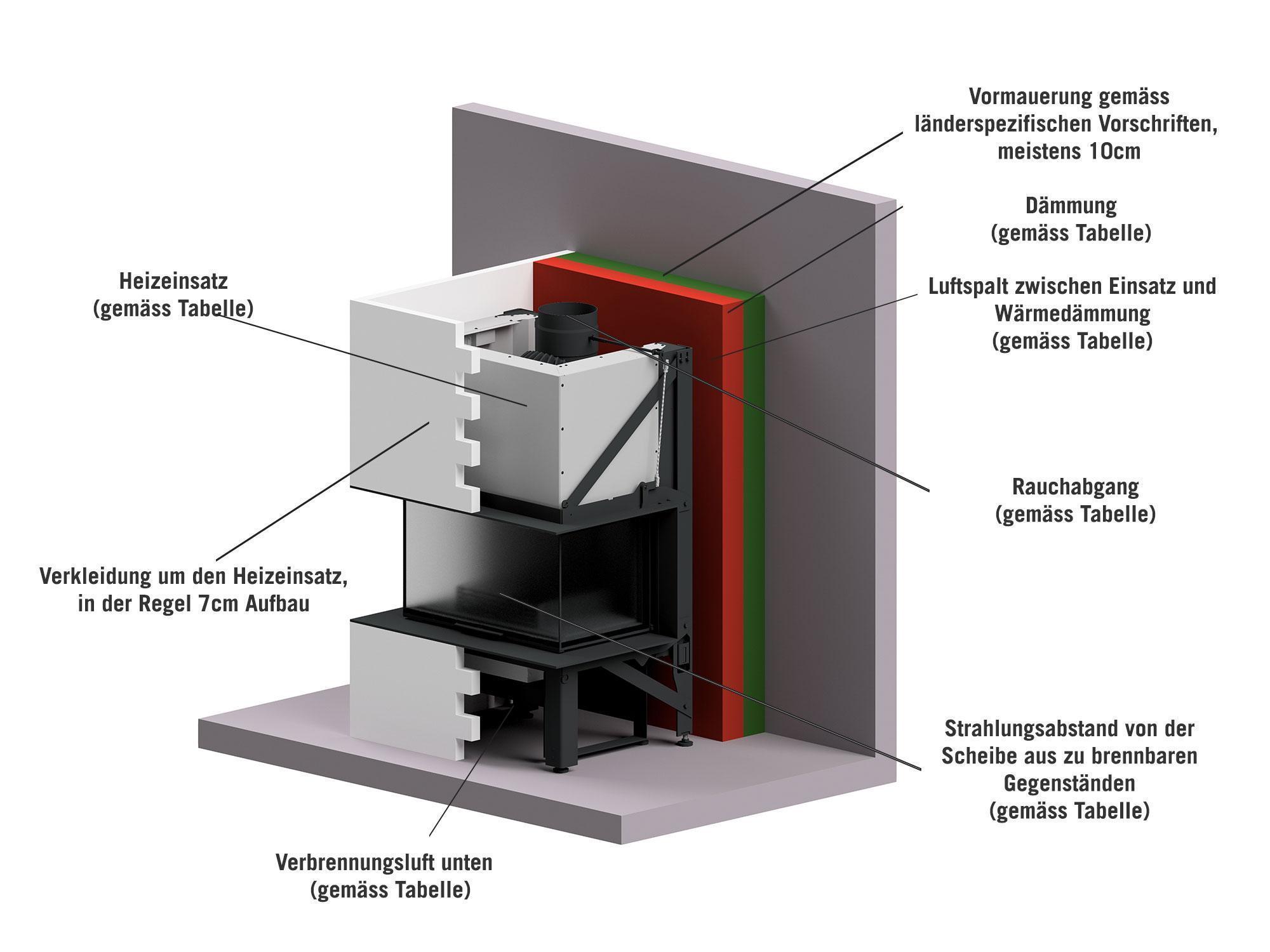Planning basics when installing a fireplace
In the following we will show you how a fireplace is constructed. This information is intended to help architects and planners properly plan the installation in various living areas.
Should you have any questions, please do not hesitate to contact our technical experts.
Phone: +41 (0)44 938 58 58
EMail: Kontakt
Classic fireplace construction
Insulation:
For the thermal insulation of Rüegg fireplace inserts, only insulating materials made of mineral wool according to the table below or substitute insulating materials made of calcium silicate/vermiculite may be used. All insulating materials must be approved by the appropriate authorities. The insulating materials used must have long-term heat resistance and also be resistant to abrasion when used in fireplace inserts without a convection lining.
Insulation thickness:
The required insulation thickness depends on the insulating materials used. The insulation thicknesses listed in the table below only apply to mineral wool. The respective manufacturer’s specifications apply when determining the insulation thickness for substitute insulating materials
Air gap:
An air gap (distance) must be left as shown in the table below between the back/side wall of the fireplace insert and the thermal insulation..
Air cross-section:
The minimum free cross-section required in the casing for fireplace inserts is listed in the table below. In some countries, fireplaces/heating inserts may also be used without ventilation grilles as storage systems.
Download centre
You can find the dimensional drawings for our heating inserts as a PDF or DXF in our download centre. Should you need 3D files, please send us a request. We would be happy to supply you with this.
